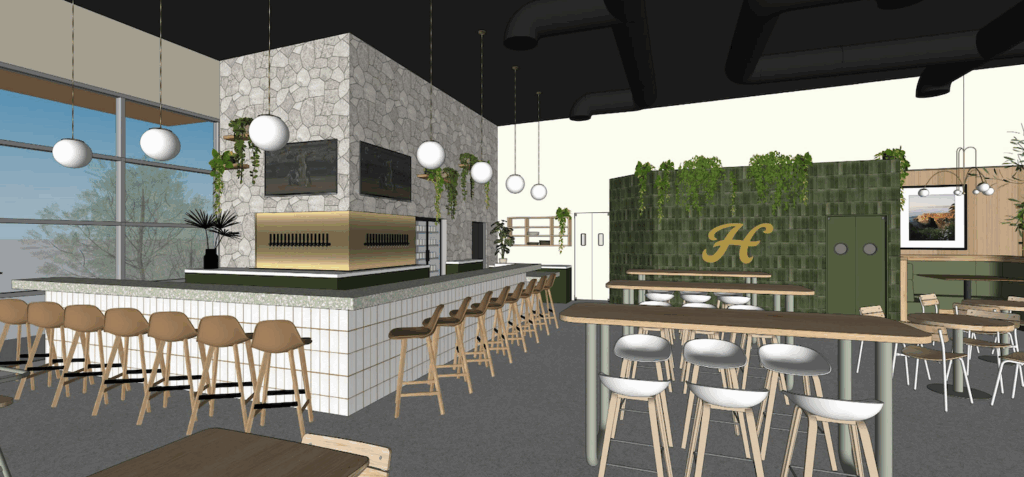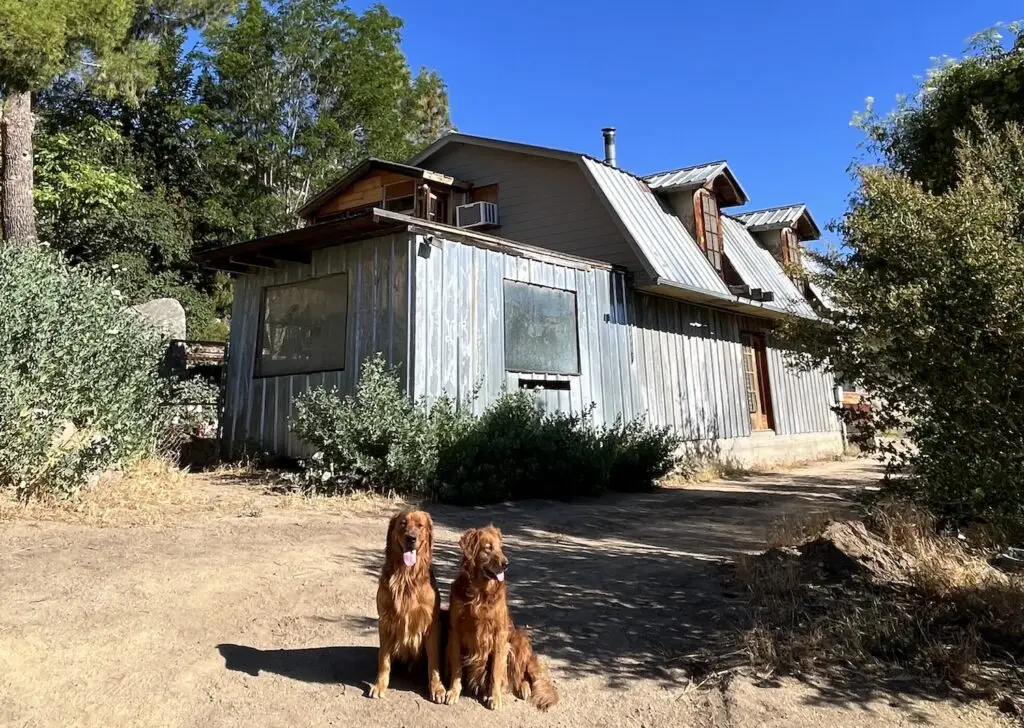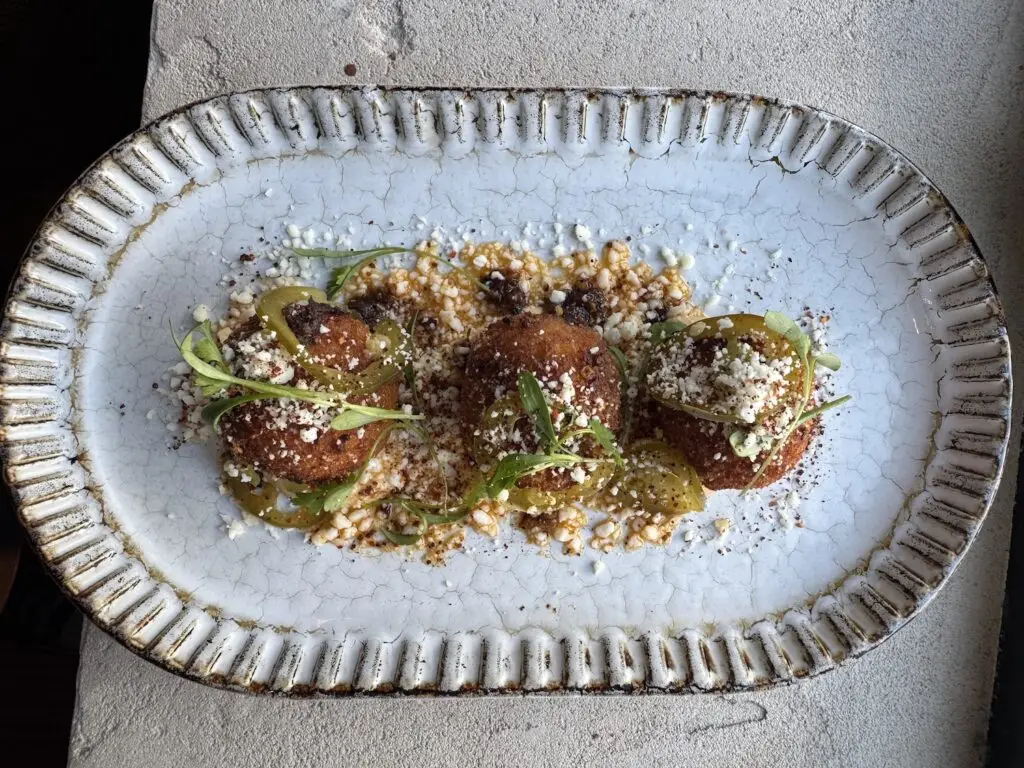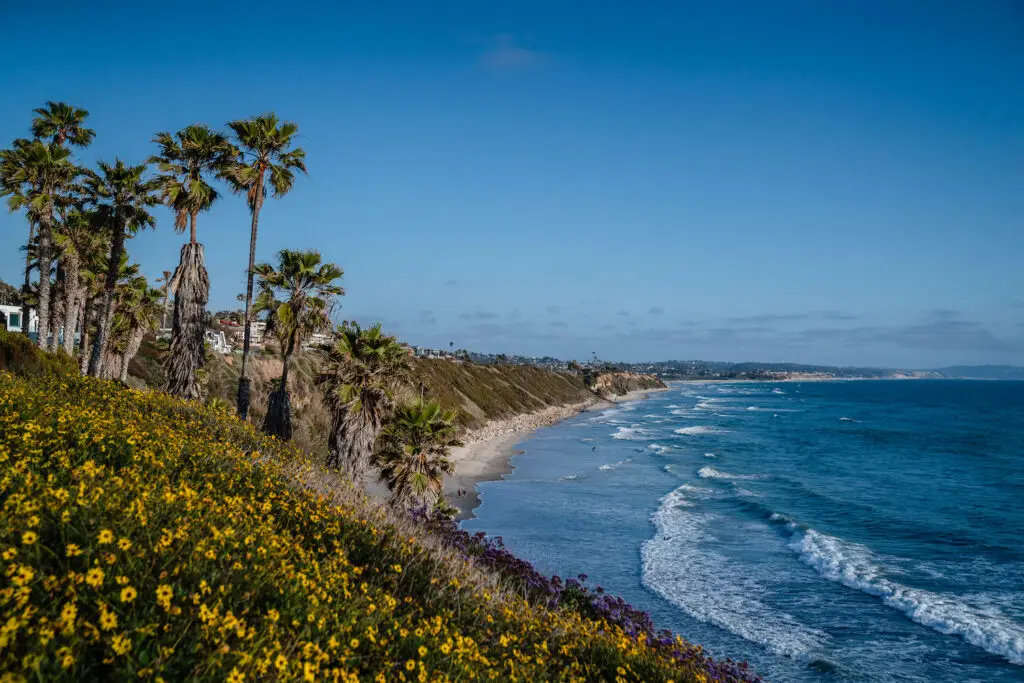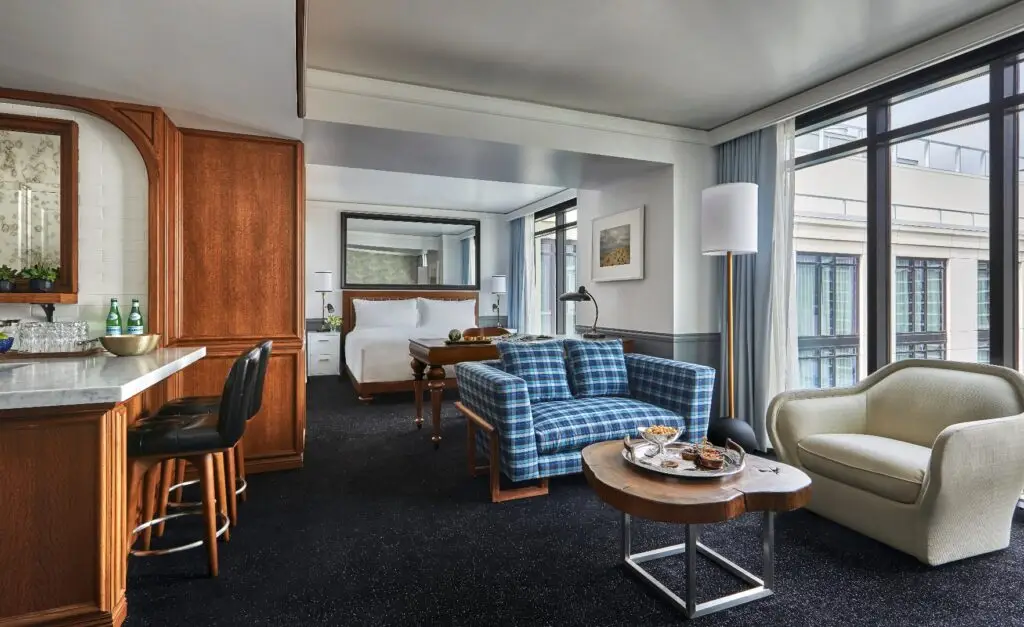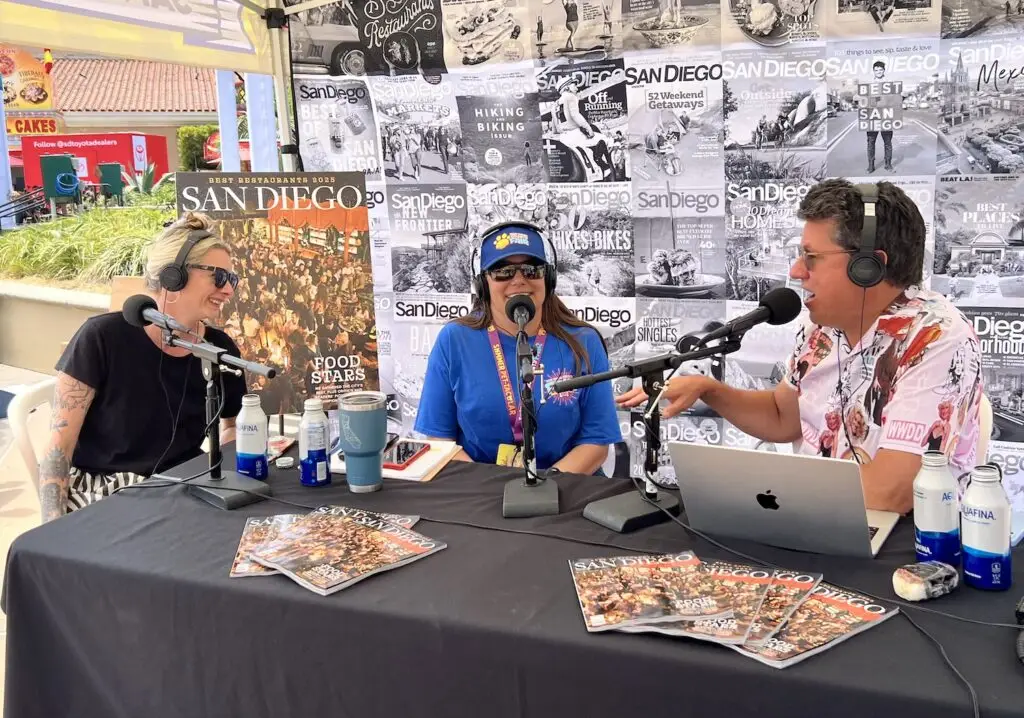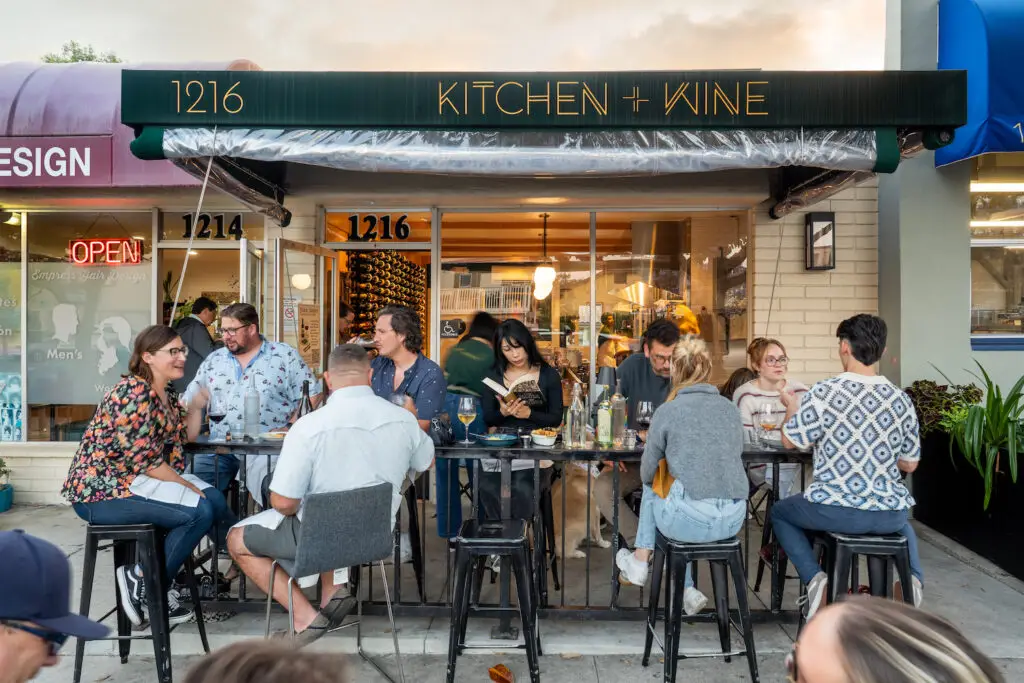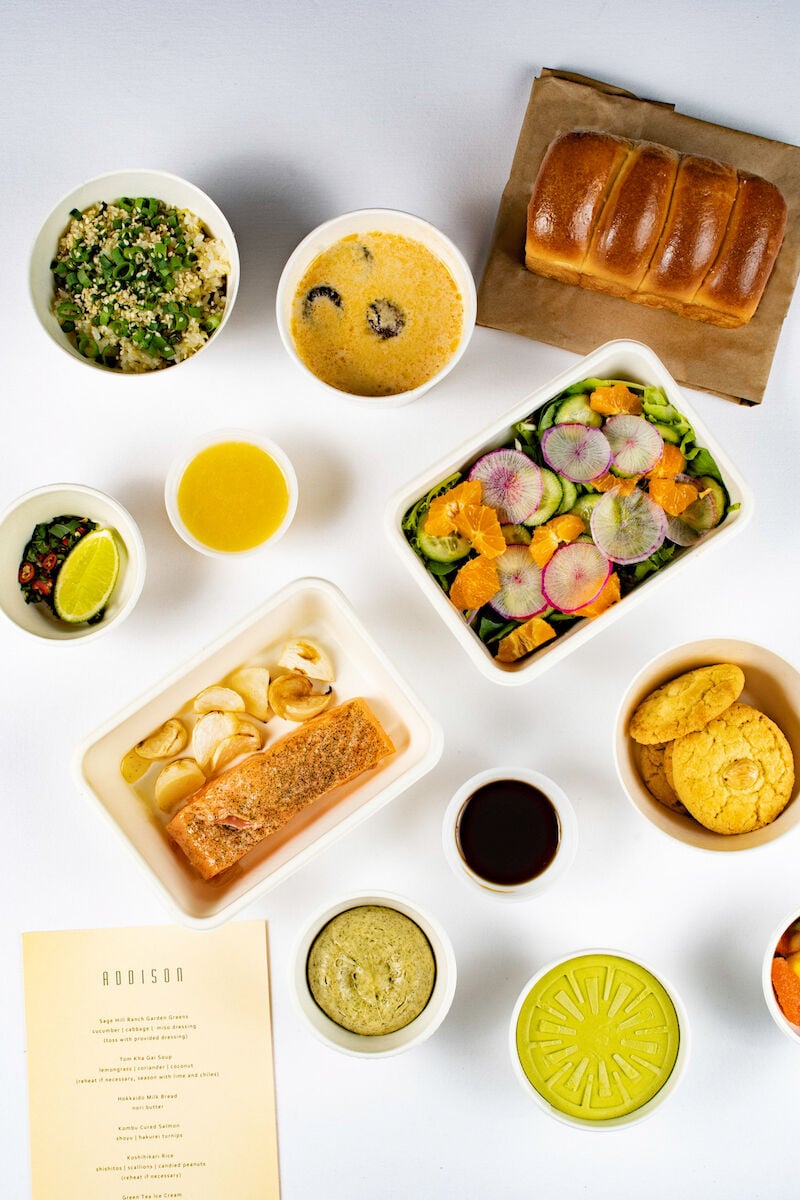
Addison food
There’s a six-course, Michelin-star meal in the trunk of my base model Honda.
My car has transported a pathological amount of food over the years, most of it humble and handheld. Tacos ride shotgun, the console smells faintly of kebabs past. But now, resting in the trunk next to my daughter’s skateboard and our family’s emergency serape is a bagged feast I never expected: a warm round of sourdough with a sea-salt-spackled crust, deeply browned like summer skin, next to a plastic ramekin of cloud-white goat’s-milk butter; a salad of lettuces flamboyant with chlorophyll, with preserved lemon and creamy garlic dressing; a tender-juicy roasted Jidori chicken with amber jus that, when heated, tastes like a good buzz feels; an orzo pasta with artichokes and Castelvetrano olives so vividly green from pulverized arugula that it glows like a birthstone; and a tiramisu wet and reckless with espresso.
My car smells like a wedding anniversary. It’s a bit nerve-racking (Will I have to reheat? Should I pull over and ravage it on my dash?) and wrong (How can I indulge now?).
Chef and San Diego native William Bradley of Addison started as a dishwasher in Chula Vista restaurants as a teen, then dedicated his life to mastering every skill, technique, and food-whispering that, in 2019, earned him San Diego’s first Michelin star. Before the pandemic, Addison was a nightly apotheosis of cooking and wine and cocktails and hospitality—an elaborate performance with every bell and whistle and remoulade. Dinner as a Broadway show. Meals here are meant to be eaten immediately, in a dining room that looks like a set from The Crown, feet away from a kitchen so clean you could confess your sins to it. And now it’s the fanciest thing in my trunk—because, as I write this, fine dining is largely closed, and chefs like Bradley aren’t precious about it.
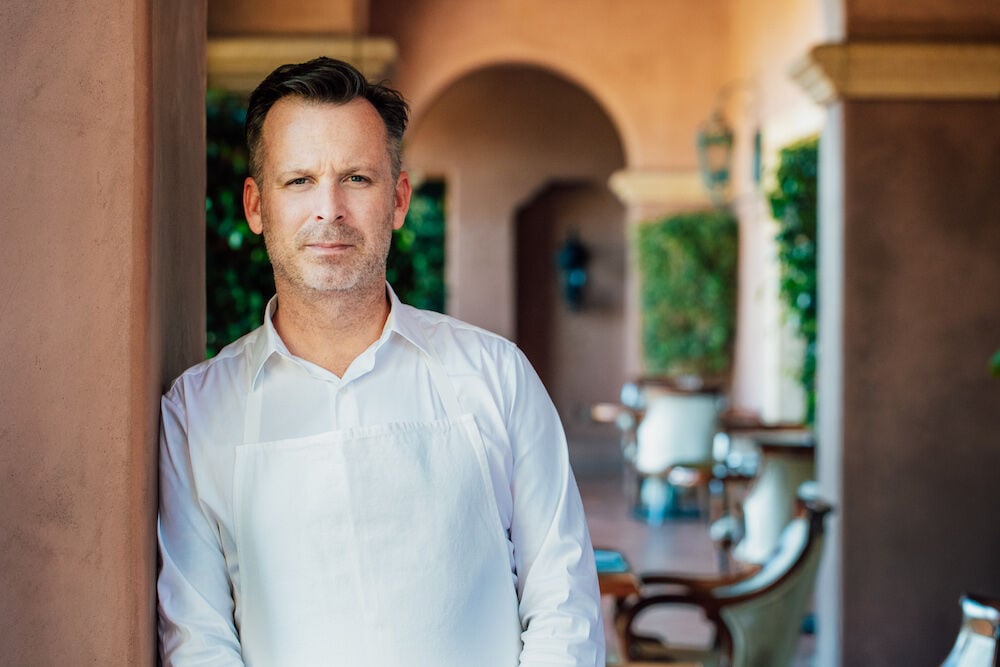
Chef William Bradley of Addison
Lauren Di Matteo
“I wanted you to be able to pull over to the side of the road and eat it in your car if you wanted to,” he says of Addison at Home, their to-go food pivot. “Some places, like Alinea and The French Laundry, have been very successful doing tasting menus during all this. But we didn’t want to do that. I’m either all-in, or take a different path. So we decided to have fun, do approachable food.”
It’s not ideal for the chef. By the time I get the meal home, the goat’s-milk butter has separated (a simple whisk will reconstitute its glory). The chicken skin, crackling like movie-glass out of his oven, has relaxed into a softer rotisserie vibe. The 25-minute drive has undone some of the obsessive execution and intricate refinements that make Addison’s food so revered. It’s still the best takeout I’ve ever had and, at $90 for six courses, a drastic price reduction. The next night, in a rush, I will nuke that chicken on high for 90 seconds and eat it with my plebeian hands.
The pandemic hit different restaurants differently. Mom-and-pop spots that depend on dine-in customers have been devastated. Some places designed for takeout are having their best years. Fine dining, meanwhile, has been all but nullified. The pivots are stark. Noma, one of the world’s most famous restaurants, became a burger joint. Seattle’s Canlis created an outdoor “crab shack” before moving to a takeout model. In LA, an event called “Resy Drive-Thru” pulled together ten restaurants for a 10-course, car-based dinner event (drive up, enjoy the first course, pull forward to be served the second, and so on). The list of permanent closures is long and striking (Hakkasan in SF, Momofuku Nishi in NYC).
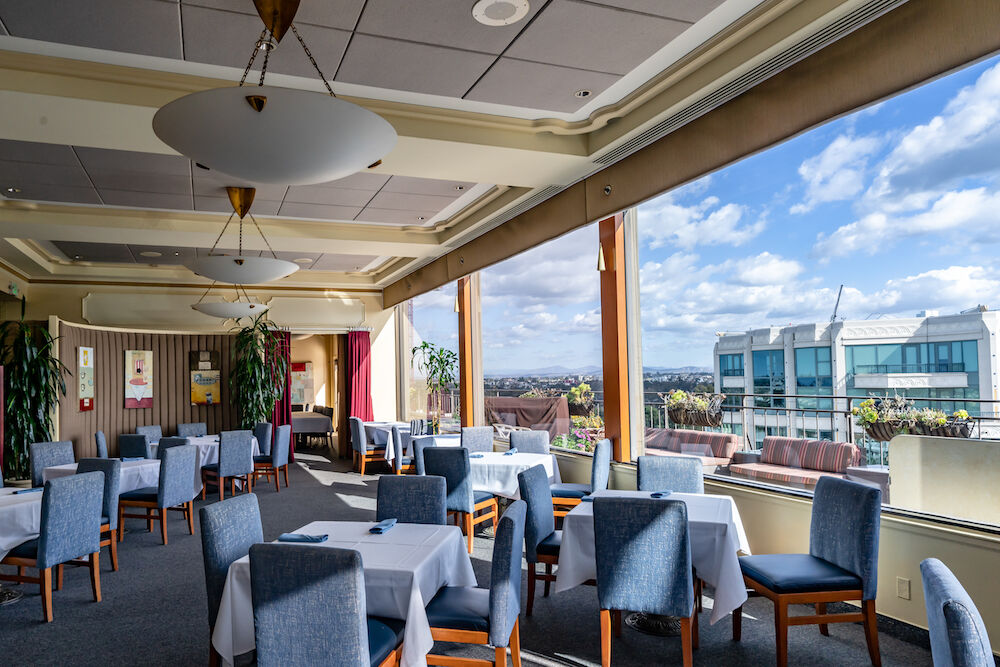
The empty dining room at Mister A’s
In San Diego, Jeune et Jolie re-created their restaurant in the adjacent parking lot. Juniper and Ivy did the same, purchasing a 40-foot railroad car to try to externalize some of the restaurant’s design awe (now if they could just stop planes from flying overhead). A local startup, In Good Company, is helping some of the city’s top restaurants package frozen entrées for a meal delivery service. When the state restricted restaurants to takeout and delivery, Addison went for it. Others, like Born & Raised and Mister A’s, opted to close.
“So much of what we do is about creating a feeling,” says Arsalun Tafazoli, owner of Born & Raised. “Beyond the food, what we’re selling is a sense of community. We do that by creating these environments and immersing people in them. Because that’s our raison d’être, there’s no way we can pivot. Serving a 55-day dry-aged rib eye in a parking lot seems disingenuous and exploitative.”
Restaurateur Bertrand Hug had little choice but to shutter Mister A’s. The iconic restaurant perches atop a 13-story, 168,000-square-foot building in Bankers Hill. It’s accessible only by elevator, one of the worst places to find oneself in a pandemic. He tried takeout, and while they did well for Christmas and New Year’s, the last Saturday they were open they had only 12 orders. “I was paying five people in the kitchen and three people in front,” he says. “I’m losing money and digging out of my retirement. I didn’t have much of a choice.”
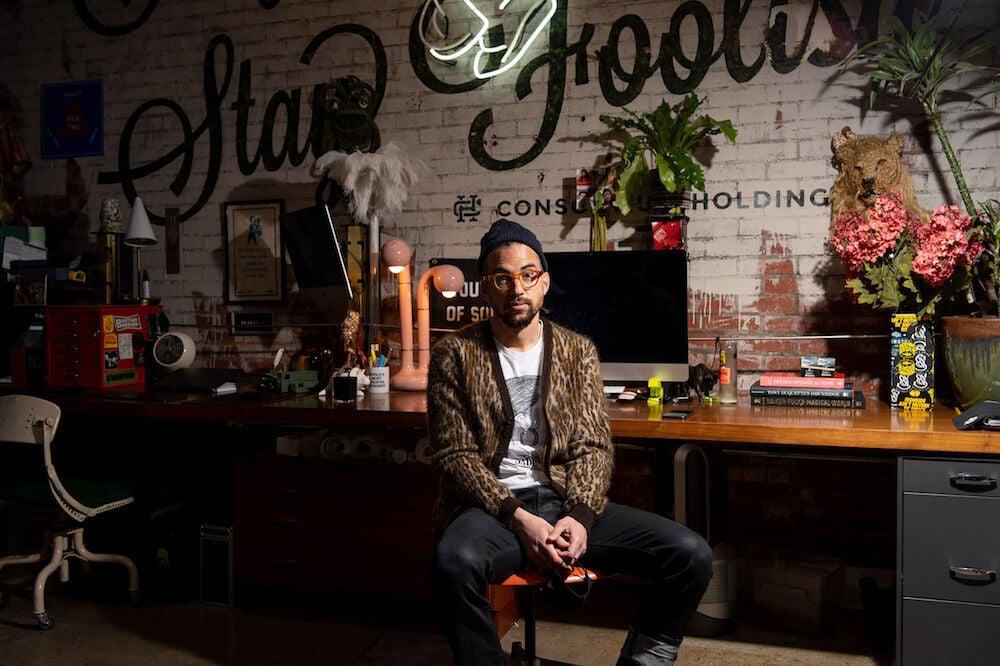
Arsalun Tafazoli, cofounder of CH Projects, which includes more than a dozen restaurants and bars in San Diego
Fine dining doesn’t pivot very well for a few reasons. First, the food isn’t meant to pause very long under heat lamps, let alone take a joyride with a Postmate. At places like Juniper and Ivy, part of the experience is the plating itself—the maxim being “you eat with your eyes first.” Chef Anthony Wells and team construct dishes like micro-architecture.
“Restaurants like ours aren’t generally equipped to package our food intelligently,” says Juniper and Ivy’s owner, Mike Rosen. “No one wants to eat tweezer food. You’re not going to unpack all these microgreens and sauces. So it was a learning curve for the back of the house on which foods can travel well. We went with comfort food.”
Owners of high-end restaurants invest a million dollars (or two or three or seven) creating not just restaurants, but regional attractions—intricately designed eye candy alterna-worlds whose escapist magic absolutely depends on people losing themselves in the space and the experience. “We over-thought and over-invested in every detail of Born & Raised,” Tafazoli says. “It’s built for celebration and special occasions, and right now we’re in a place and time that doesn’t feel celebratory whatsoever.”
In our current economic situation, it’s harder to drum up sympathy for fine dining than for a mom-and-pop restaurant. The sector’s high costs (rent, architecture, design, chef and bar and management talent, good food and booze, nice plates and linen and glassware, etc.) demand high prices for solvency—not to mention returns for investors—which makes them somewhat or extremely exclusive by nature.
Studies have shown that immigrant-owned restaurants are at the highest risk of closing during the pandemic. When the economy is good, fine dining restaurants are treasured as a reward. When the economy is bad, they’re vilified as reminders of our frippery and the country’s ever-increasing socioeconomic divide.
But it’s also true that the chefs who helm them have worked thankless, low-paying gigs for years to achieve this dream, where they’re given the financial support to pursue their life’s work and craft at the highest level. The kitchens and bars serve as on-the-job culinary schools for aspiring cooks and beverage professionals. Farmers, bakers, winemakers, brewers, and “makers” of all sorts depend on them to showcase their products in the best possible light. The big ones employ dozens of people, if not triple figures. The good ones bring national acclaim and municipal pride. And for the average San Diegan, they are the restaurants we treat ourselves to when the work finally pays off, when the date is big, or when we want to show an out-of-town friend that our city is better than theirs.
Last summer, Bradley and his team had great success re-creating the Addison experience outdoors. With summer travel plans canceled, people who had that expendable income were redirecting it to road trips and indulgent experiences—like driving from the Bay Area to dine at a Michelin-star restaurant in San Diego.
“We waited two months to do it because it was a roller coaster,” he says. “You have to protect the integrity of a restaurant with a Michelin star. For us to open outside there’s a lot of strategy. I could not believe the amount of support that we got, five days a week.”
Staff had to haul the furniture outside at the start of the day, set up the dining experience to exacting specifications, then haul it all back in at the end of the night. His team also had to walk half a marathon every time they came to work.
“One of our captains tracked his steps and he walked 15 miles in one dinner service,” says Bradley, noting their outdoor experience was set up on the rooftop and around the large building, far from the kitchen. “But it was worth it to be able to get back together. Physically challenging, but mentally rewarding.”
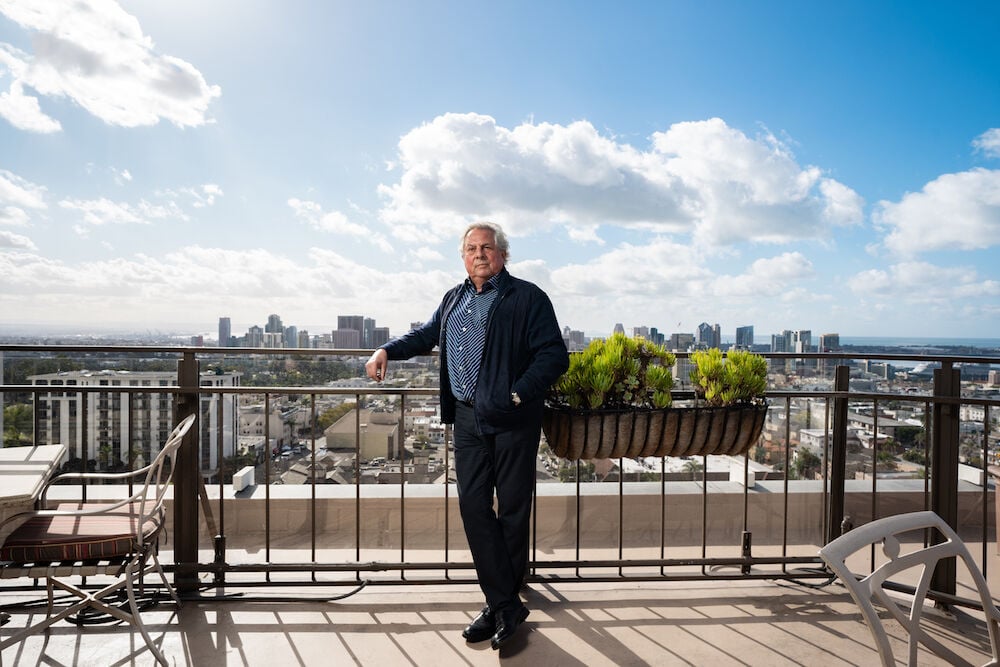
Bertrand Hug on the patio at Mister A’s
While these restaurants adapted and fell on their economic sword to safeguard public health, others did not. At Mister A’s, Hug has watched nearby restaurants ignore shutdown orders—and they’re packed, he says. Not only does that siphon business away from Mister A’s, but the “protestaurants” potentially increase the spread of COVID-19. The more COVID, the longer all restaurants will be handcuffed by restrictions. It reminds you of the whole class having to stay in at recess because a couple kids acted up during quiet time.
“I have colleagues who are wide open here—200 guests on a Friday night, people dining inside,” Hug says. “It puts me in a difficult position because my staff sees them and says, ‘Hey, so and so is open but we’re closed and I’m unemployed.’ But I just don’t think it’s a good idea. I blame California for being completely bananas on the restrictions but not enforcing them. If they enforced them, or if everyone just followed the directions, I don’t think we’d be in the spot we’re in right now.”
Most restaurateurs I talk to say the same thing: They’re willing to sacrifice their business for public health, but it sure would be nice if the government guaranteed their financial survival if they do. They would also love to see scientific proof that socially distanced outdoor dining contributes to the spread.
As Flying Pig owner Aaron Browning put it, “I can stand in a line indoors with 30 people for 15 minutes at a Wal-Mart, and yet I’m told people eating on my patio is unsafe.”
Mike Rosen points out, “I feel like there are 10,000 medical statisticians all keeping track of COVID by age, sex, and race, but it doesn’t seem like we know any more than we did six months ago about whether it spreads on a plane or at a restaurant,” adding that airlines are still allowed to book flights while his restaurant is forced to close.
Chefs and restaurateurs differ on what fine dining will look like when this is over. The doomsayers tend to be the loudest. Some say it’ll become a relic, yielding to a future of delivery apps, ghost kitchens, and a mountain of to-go containers. Or, now that we’ve been forced to become master home cooks, we’ll dine out less. Robb Report and NBC News have published stories titled “The Death of Fine Dining” and “Is Coronavirus the End for Fancy Restaurants?”, respectively.
For his part, Bradley doesn’t think so: “I hear people saying, ‘Can you guys open already? I’m tired of cooking.’ I think it’s wonderful people have become better cooks during this. They’re more into it, so they’ll understand the work it entails, and expect
more from us. Some of the best restaurants in the world are in Europe, and Europeans do a lot more cooking at home than we do.”
“People keep reminding me that the Spanish flu was followed by the Roaring 20s,” says Rosen. “After 2008 I remember people saying, ‘I’m not going to care about wearing expensive shoes.’ A few months later they had nice shoes. We’re social creatures. This is thousands of years of people loving to get together and break bread and drink wine. Eating at home in front of your computer bingeing Netflix is just not the same. So I don’t know if we’re going to double down on Juniper and Ivy, but we think people are going to want to go back to the way things were.”
Tafazoli is metaphysical about the whole thing. He’d prefer wholesale survival, of course. But if he doesn’t, he’s ready to accept it as part of a larger truth.
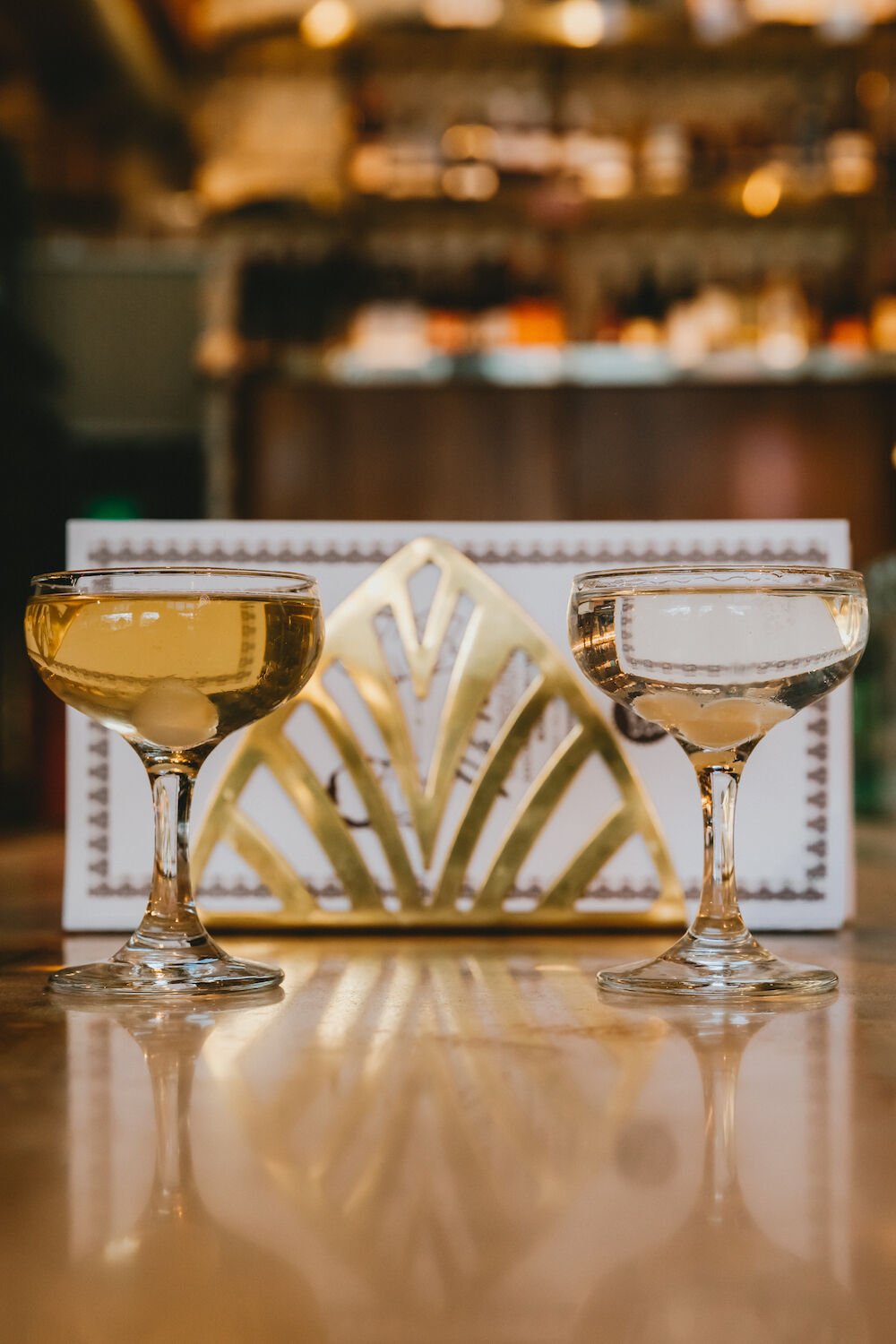
Drinks at J & Tony’s Negroni Warehouse
“You can’t fight the laws of nature,” he surmises. “In any ecosystem there is a natural force that comes through and restores order and balance. The pandemic is that. Pre-pandemic, a young and talented chef had to sell their soul to get into our industry. You couldn’t get out of bed without spending a million, and that pushes out anybody with vision and passion. Now there’s going to be a lot of opportunity. I’m going through existential angst accepting the fact that youth always wins. If we die, that gives the next generation the opportunity to come up. There’s beauty in that.”
PARTNER CONTENT
Editor’s Note: This story was published when restaurants were limited to serving takeout only. Addison and Mister A’s have resumed outdoor dining, Jeune et Jolie plans to reopen their patio in early March.
